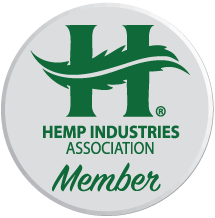It’s no surprise that the Lone Star State isn’t terribly fond of cannabis. After all, the state has a reputation for law and order, so being caught with even a small amount of THC-laden plant matter – with a few medical exemptions – can lead to some serious jail time and hefty fines. At the same time, the agriculture-friendly state has cleared the way for an active hemp cultivation program.
To bring together the world of enforcement and the worlds of farming, or at least the Departments of Public Safety, Agriculture, and State Health Services, Texas lawmakers have come up with a variety of policies and procedures governing what is acceptable and what isn’t in regards to cannabis use, possession, sales, testing and growing, including hemp-based products. This effort also removed hemp from the list of controlled substances, where it used to be next to “marihuana.”
One of these regulations requires QR codes to be placed on hemp CBD products as part of a set of packaging and labeling requirements. Producers/processors creating cannabinoid oil for wholesale distribution must register with the state and also be available for random testing.
The QR code/bar code needs to include information about the product name and what company produced it, as well as any details such as:
- Lot number and date of when it was grown and harvested
- Details about any manufacturer/processor if different than grower
- Estimated expiration date (about two years from being manufactured)
- Contact information including phone number and email
- A URL providing more information about the producer, processor or lab analysis.
- A Certificate of Analysis that the sample doesn’t include more than .3 percent of THC, by dry weight.
A wholesaler failing to follow these compliance rules, including a Texas CBD QR code, could face penalties if their products are found on store shelves.
Much the initial hemp regulations were created in 2018 with the approval of the federal Farm Bill, which classified hemp as a possible agricultural product. Texas clarified its stance and adopted its own hemp program in 2019, starting with defining hemp-based cannabinol oil. But the state continues to fine-tune other usages of CBD and hemp products.
For instance, in May, the state DHSH proposed updated rules for edible hemp products that took effect in July. These require retailers wanting to sell CBD hemp products to pay a $150 annual registration fee, and wholesalers of consumable products are required to include a Texas CBD QR code with similar language to labeling of CBD oil, such as the name of the company, any other ingredients, lab reports, and certification that any THC is under the .3 percent legal threshold.
While these rules govern hemp intended for consumption, such as in food, the state has been more strict with regulations for hemp and CBD products intended for smoking. Though cannabis users aren’t sure what the health benefits would be, since legal commercial hemp is so low in THC, the experience would likely be unsatisfying, the DHSH is trying to prevent retail sales regardless, fearing that unregulated CBD could be found in vape products at Texas retailers.
Some businesses have also been reportedly selling hemp flowers, with a warning saying “not intended for human consumption.”
This evolving process has generally been welcomed by the cannabis industry. Some felt that the state defining what constituted oil was a good start, but there were some gray areas in terms of consumable products, many of which have been clarified. There was also initial confusion for law enforcement, who were trained that the presence of any THC made an item illegal, even a trace amount. This resulted in seizures and fines for retailers who believed they were compliant.
Texas joins several other states in requiring QR code labeling of its hemp and cannabis products, including New York, California and Indiana.



